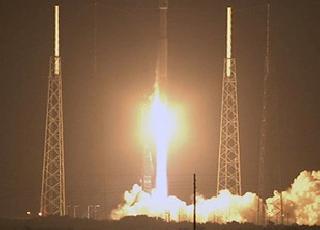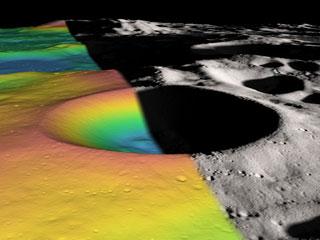
The Atlas V rocket lifts off with the RBSP satellites. A NASA photo
CAPE CANAVERAL (BNS): A pair of NASA satellites successfully launched to space on Thursday on a two-year mission to study Earth's harsh radiation belts.
An Atlas V rocket carrying the twin Radiation Belt Storm Probes (RBSP) lifted off from the Cape Canaveral Air Force Station's space launch complex at 4:05 am EDT (0805 GMT) following a "remarkably smooth overnight countdown that saw good weather and no technical problems," NASA said.
Few minutes later, the probes were released from the rocket's Centaur upper stage one after another and were placed in two different Earth orbits.
The launch was put off for a second time on August 26 following tropical storm Isaac. The probe was originally scheduled for launch on Aug. 23.
The identical twin spacecraft loaded with scientific instruments will follow each other through the Van Allen radiation belts around the Earth to gain unprecedented knowledge about the region.
The Van Allen belts lie close to Earth, sandwiched between satellites in geostationary orbit above and satellites in low Earth orbit (LEO) below.
The instruments onboard the RBSP will measure the properties of charged particles that comprise the Earth's radiation belts, the plasma waves that interact with them, the large-scale electric fields that transport them, and the particle-guiding magnetic field, the space agency said.
The mission, at a cost of USD 686 million, will improve space forecasting and would guard satellites, communication network and astronauts travelling to space from solar storms.
 Previous Article
Previous Article Next Article
Next Article













The Indian Air Force, in its flight trials evaluation report submitted before the Defence Ministry l..
view articleAn insight into the Medium Multi-Role Combat Aircraft competition...
view articleSky enthusiasts can now spot the International Space Station (ISS) commanded by Indian-American astr..
view article